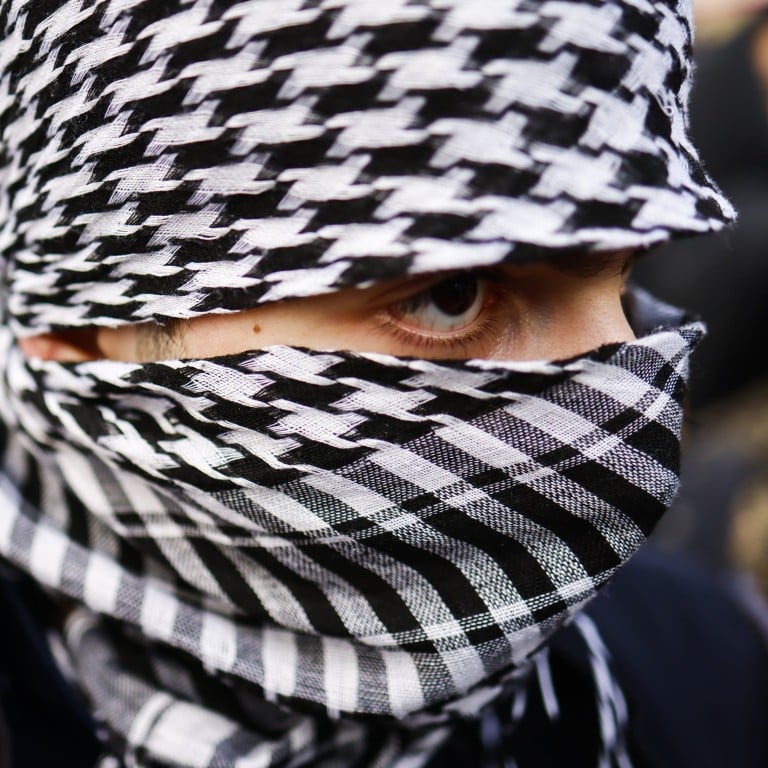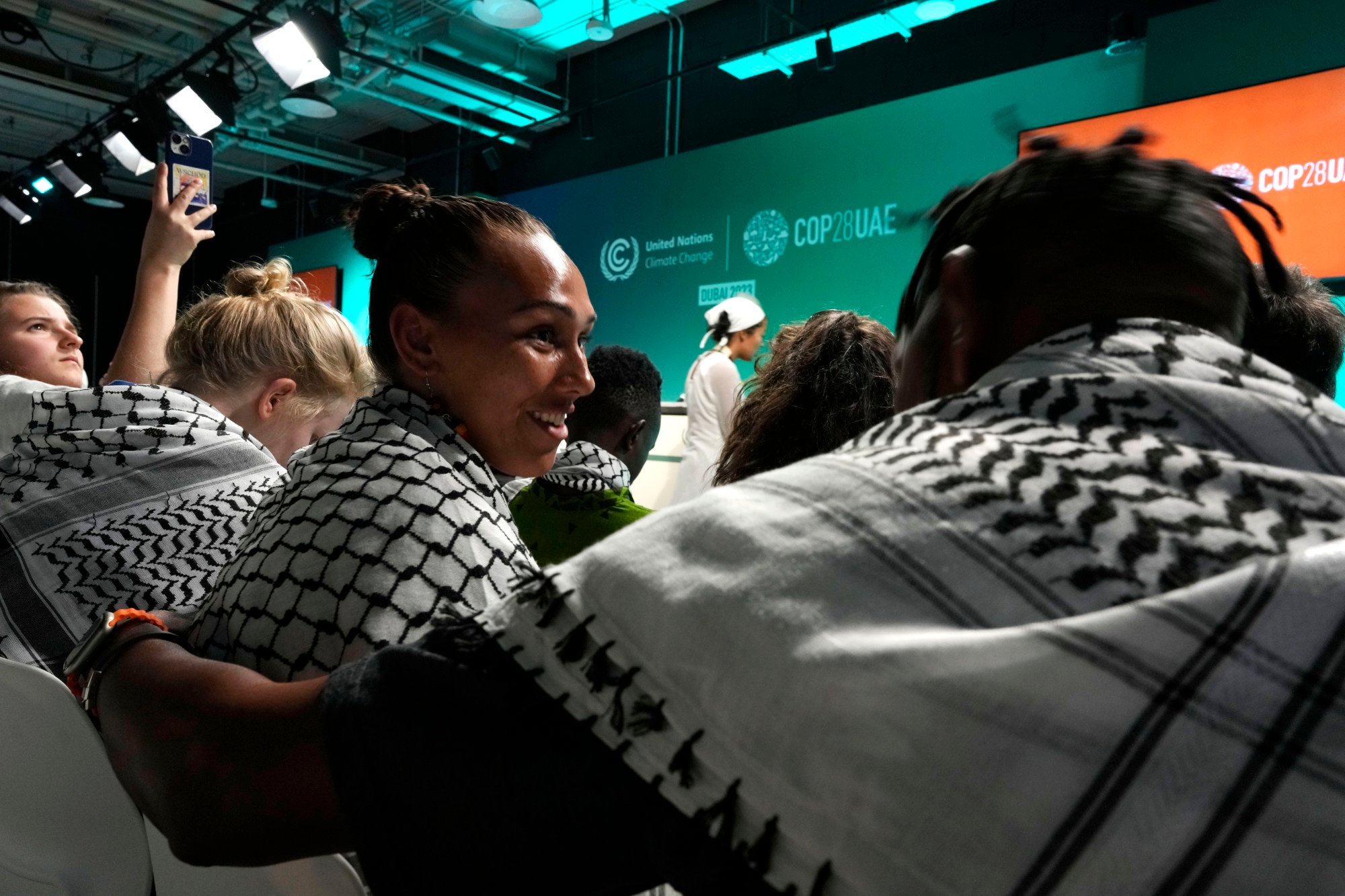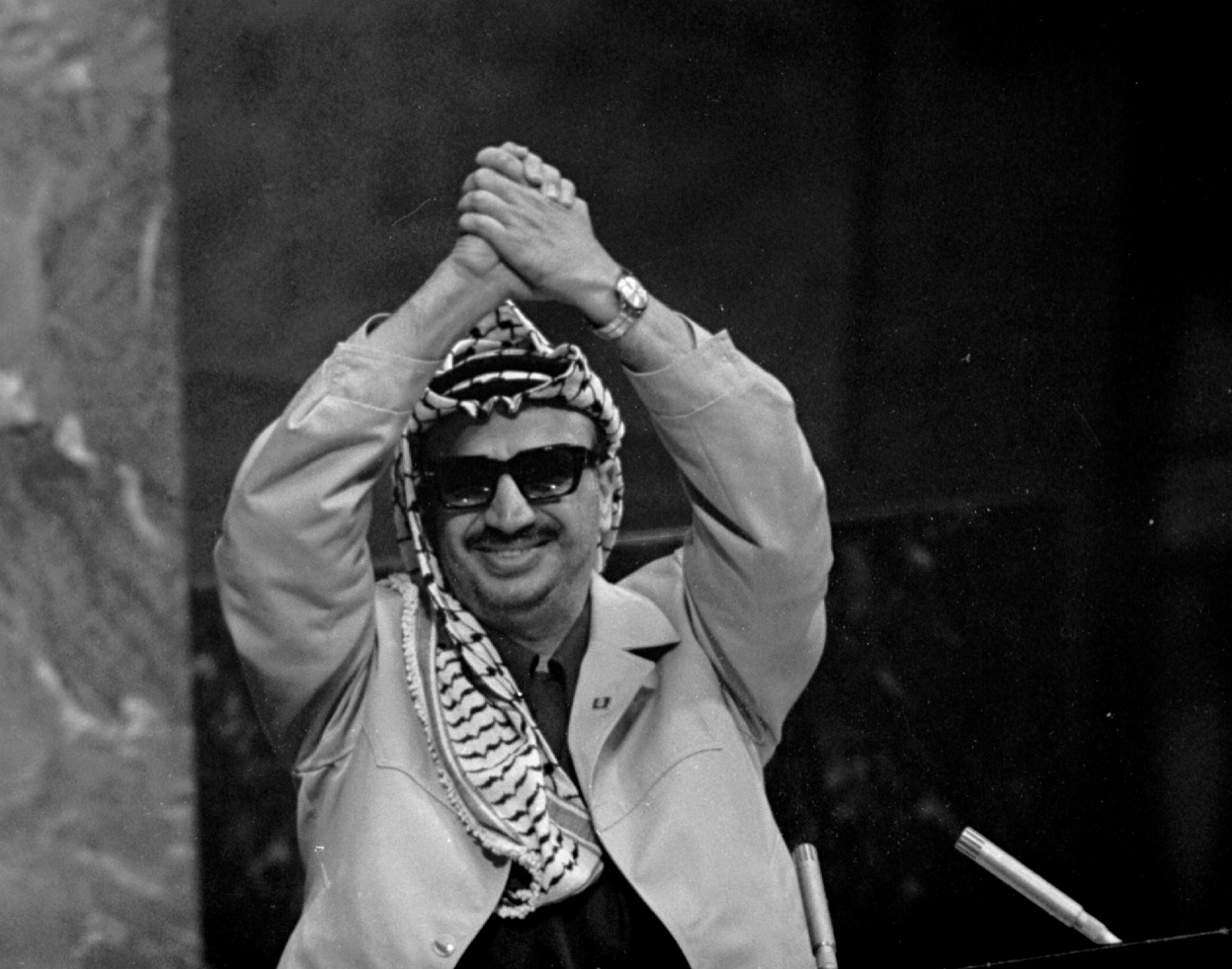
As Israel-Gaza war rages, Palestinian keffiyeh scarves become a controversial symbol
- The chequered black-and-white keffiyeh scarf has long been a symbol of Palestinian nationalism
- Recently they have drawn the attention of police in some capitals as people wear them at protests
Across the world, the black-and-white keffiyeh headscarf has become an emblem of solidarity with the Palestinian cause as war rages between Israel and Hamas militants in Gaza. It has also become a problem for those wearing it.
Supporters of Israel see the chequered scarf as a provocation and a sign of backing for what they see as terrorism.
Thousands of people have worn keffiyehs in huge protests in Britain and elsewhere in support of the Palestinians and calling for a ceasefire in the conflict.
But activists say police in France and Germany – which have cracked down on pro-Palestinian protests – have cautioned, fined or detained people wearing it.

Ramy Al-Asheq, a Palestinian Syrian poet who lives in Berlin, believes he has found a way around the problem. He had the length of his forearm tattooed with the pattern of a keffiyeh.
“The keffiyeh was being criminalised and people were asked to take it off,” he said. “I said: ‘OK, you can make me take it off but you have to cut my arm to do so.”
‘Nothing will stop us’: Israel bombs Gaza as rift with US grows
“I am celebrating my anger and my criminalised culture,” he told Reuters as a tattooist put the finishing touches on his work. “It’s also beautiful and a reminder to never forget that so many people were killed.”
Yet Germany’s Sueddeutsche Zeitung newspaper called the keffiyeh the “problem cloth” and suggested German pro-Palestinian protesters wear a Nazi uniform instead.
Israel supporters say it shows a disregard for the 1,200 Israelis killed in the cross-border raid by Hamas militants on October 7 that triggered the Israeli assault on Gaza.
Palestinian supporters point to the more than 18,000 people killed in the offensive and Israel’s continued occupation of Palestinian territory.

In the heated atmosphere, this has also led to violence. In Vermont in the United States last month, three college students of Palestinian descent – two wearing keffiyehs – were shot, leaving one paralysed.
The keffiyeh has long been a symbol of Palestinian nationalism, exemplified by the late PLO leader Yasser Arafat, who was rarely photographed without one. He folded it in a way that depicted the shape of historic Palestine.
It first took on a political significance with the 1936-1939 revolt against British rule, when rural guerillas covered their faces with the cloth, design historian Anu Lingala told Reuters. It showed “unified resistance,” she said.
Videos of Israeli soldier behaviour in Gaza create headache for military
The black-and-white pattern came in the 1950s, when British commander General John Glubb assigned it to Palestinian soldiers in the Arab Legion to distinguish them from the red-and-white of Jordanian soldiers, US historian Ted Swedenburg wrote in his book Memories of Revolt.
It was later adopted by Palestinian militants, like Laila Khaled, who hijacked an American TWA airliner in 1969. South African anti-apartheid leader Nelson Mandela, whose African National Congress was close to the PLO, sometimes sported one.
As the Palestinian flag was banned in the Israeli-occupied West Bank and Gaza between 1967 and 1993, the keffiyeh grew as a symbol of the struggle for a Palestinian state.

“What was used to cover the identity of the anti-British colonialism rebels is now a symbol to show this identity,” the poet Asheq said.
Since the start of the Israeli invasion of Gaza, online orders for the scarf have soared on the website of Hirbawi, the last keffiyeh factory on Palestinian territory.
With a monthly capacity of 5,000 keffiyehs, it will take years to fill the backlog of 150,000 people who have expressed interest, Nael Alqassis, the company’s partner in Europe, told Reuters.
UN General Assembly demands humanitarian ceasefire in Gaza
Loai Hayatleh, a salesman at a Berlin oriental trinkets shop, said the Gaza war had increased demand by 200 per cent.
“We had to get two air shipments from Syria,” said Hayatleh, whose shop had drawn police attention due to the Palestinian flag he hung above the shop window.
Berlin and Paris police said that wearing a keffiyeh was not illegal unless it covered the face. But the Berlin police said they could restrict or prohibit an outdoor gathering if they believed public safety was in immediate danger, and this could involve banning keffiyehs.
Paris police declined to comment on specific cases.
Ghassen Mzoughi was stopped by police when leaving a march in Paris in November and was told to remove a red keffiyeh that he had draped over his shoulders.
“They were calm, but the message was clear – remove it or you are not leaving,” the 39-year-old computer programmer said.
Police asked scientist Yosra Messai, 44, to remove her scarf while she was riding the Paris metro. She refused, and was fined €30 (US$33) for mounting an unauthorised protest.
“I was shocked and in tears. It is a symbol – it is the least we can do,” she said.

